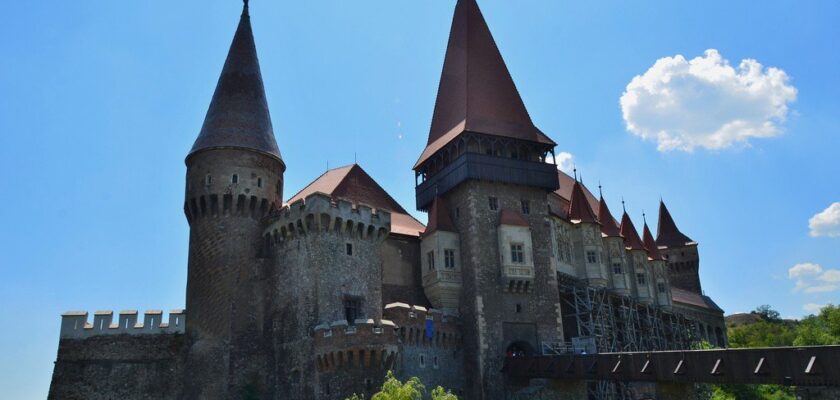Castelul Corvinilor
Castelul Corvinov is a family estate in the south of Transylvania in Romania, in the provincial town of Hunedoara. Tourists are attracted here not only by its medieval beauty, but also by the place’s connection to Count Dracula. It is believed that after his overthrow from the throne, Vlad Tepes III was imprisoned in the dungeon of the castle, and he spent many years here. This story has no serious confirmation, but it continues to stir people’s minds. Today, the Corvinov Castle houses a historical museum.
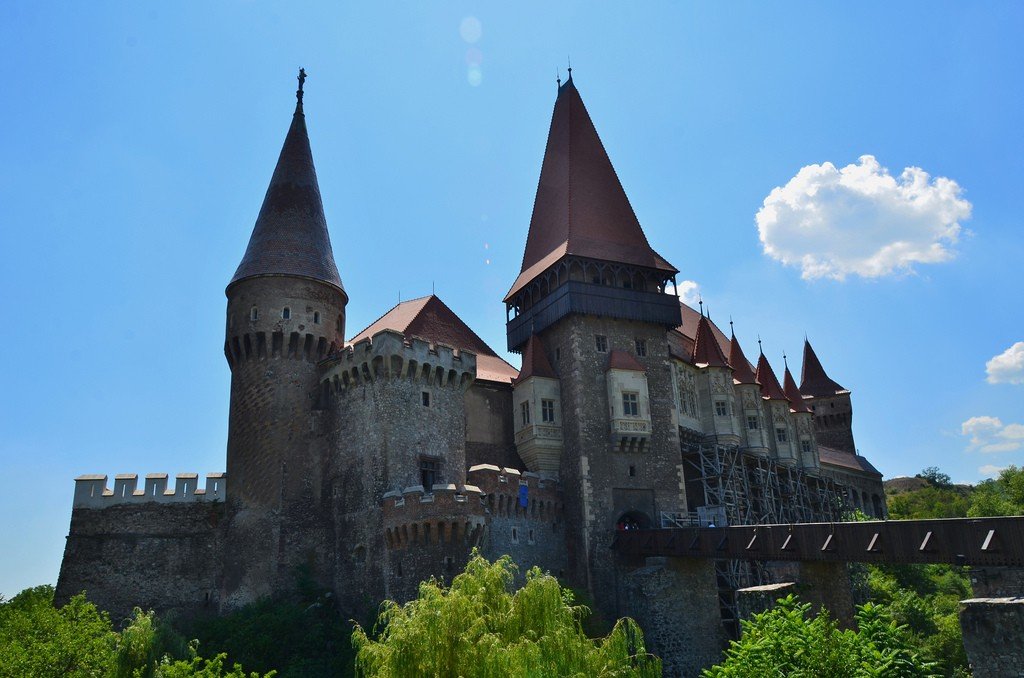
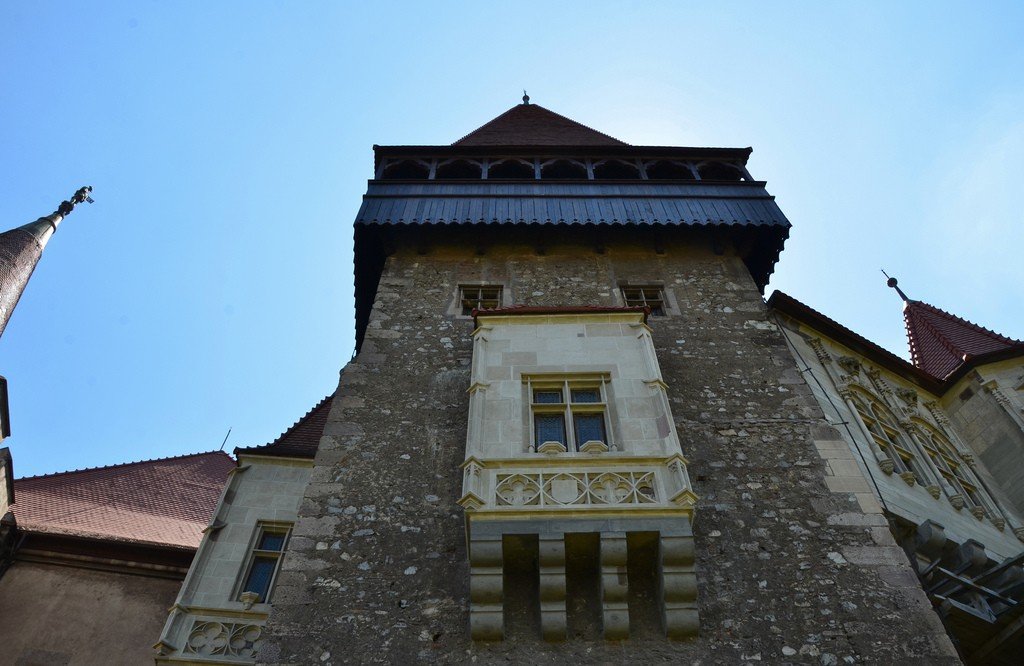
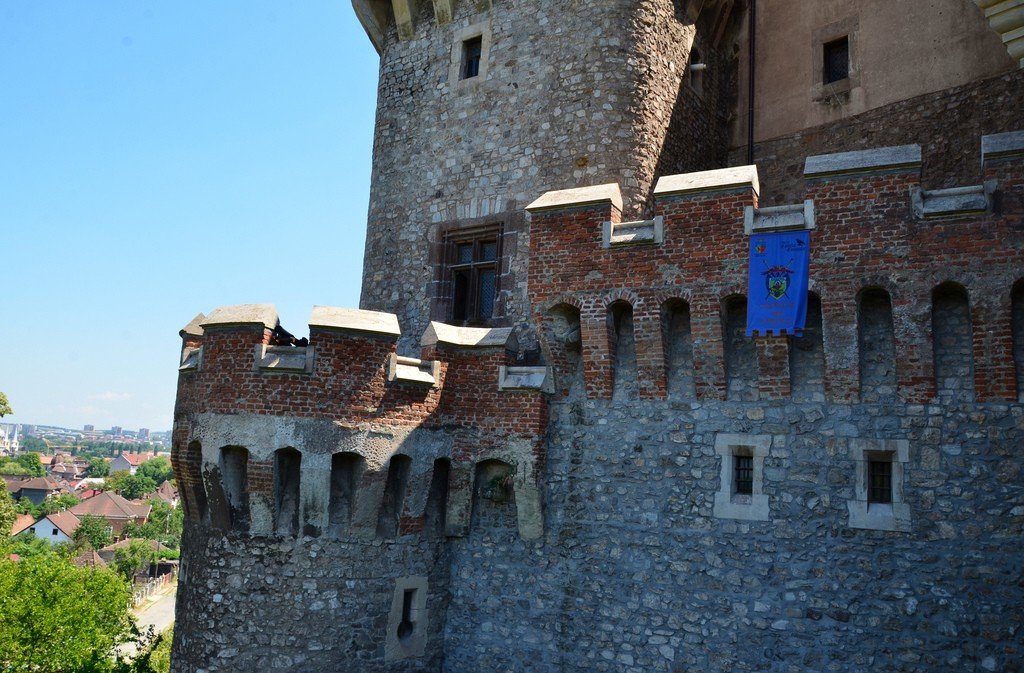
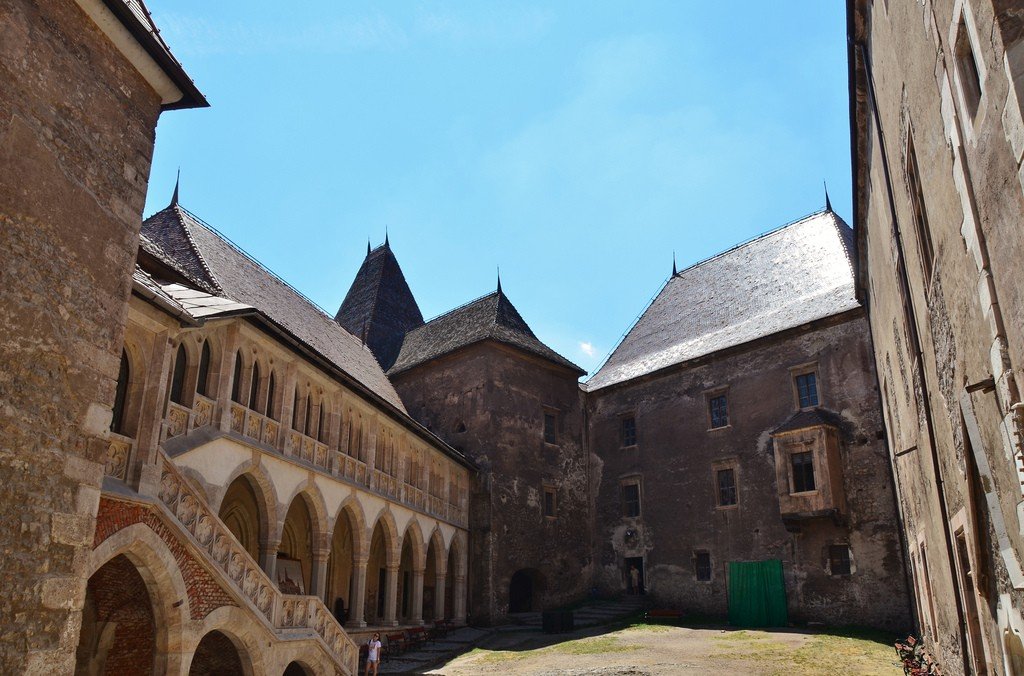
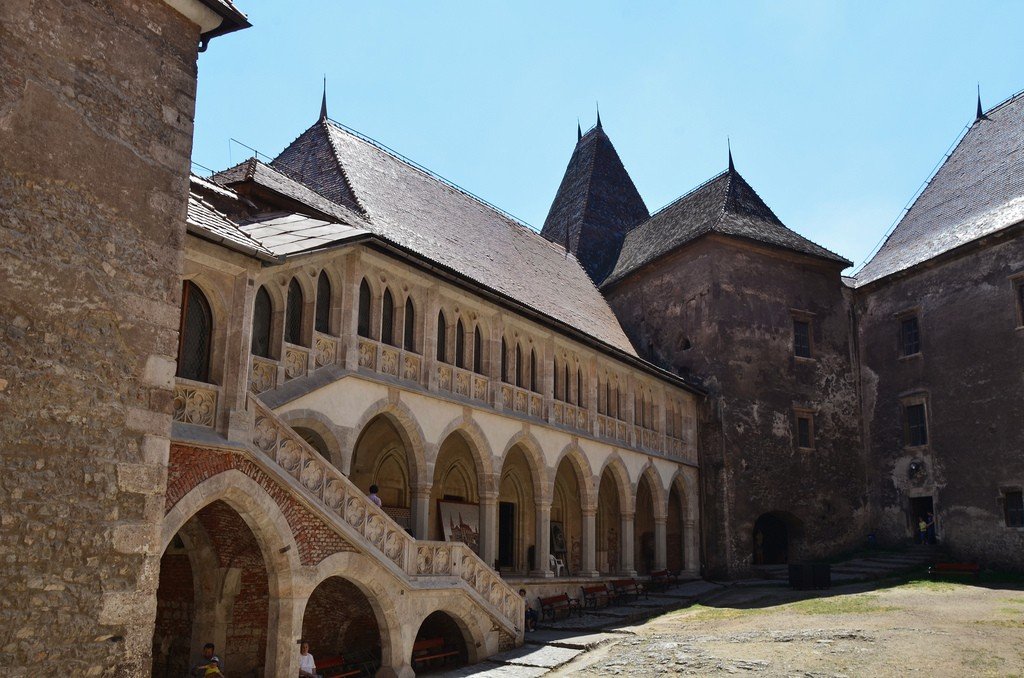
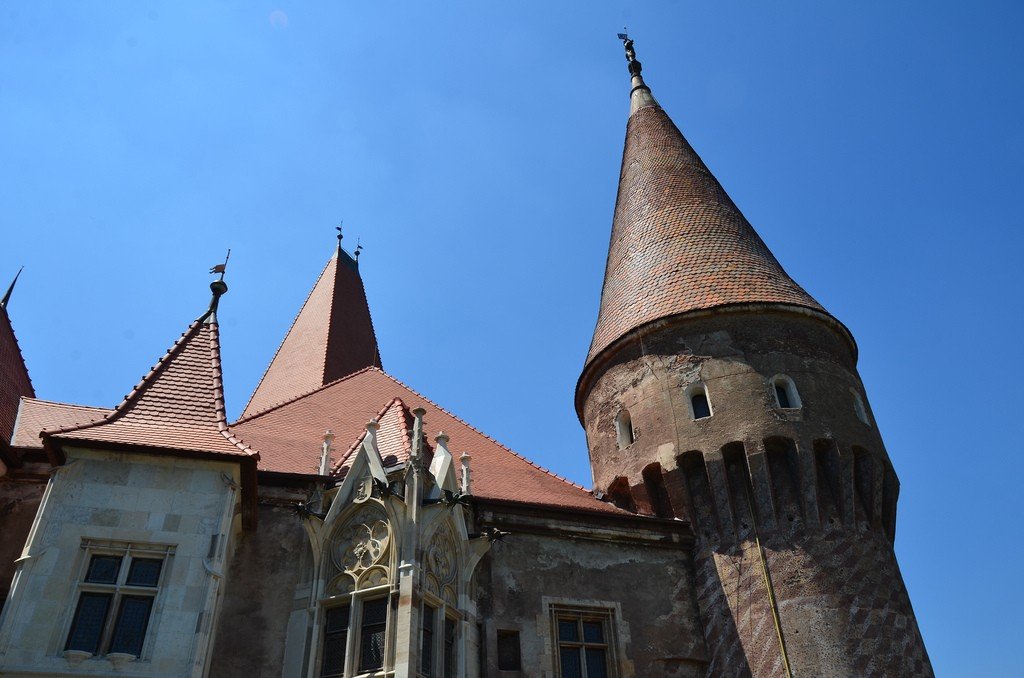
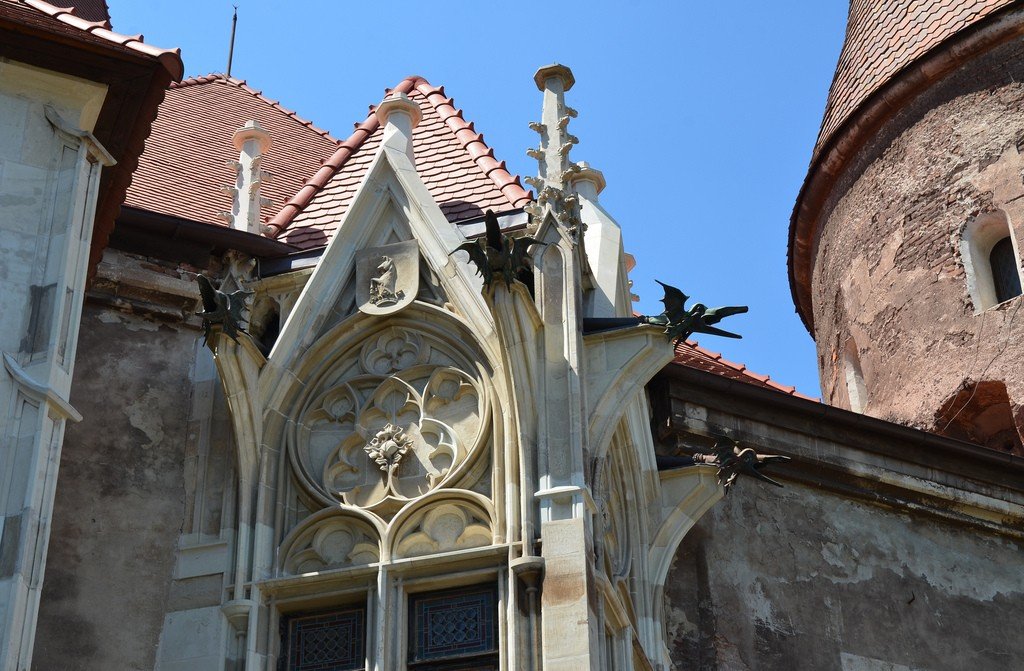
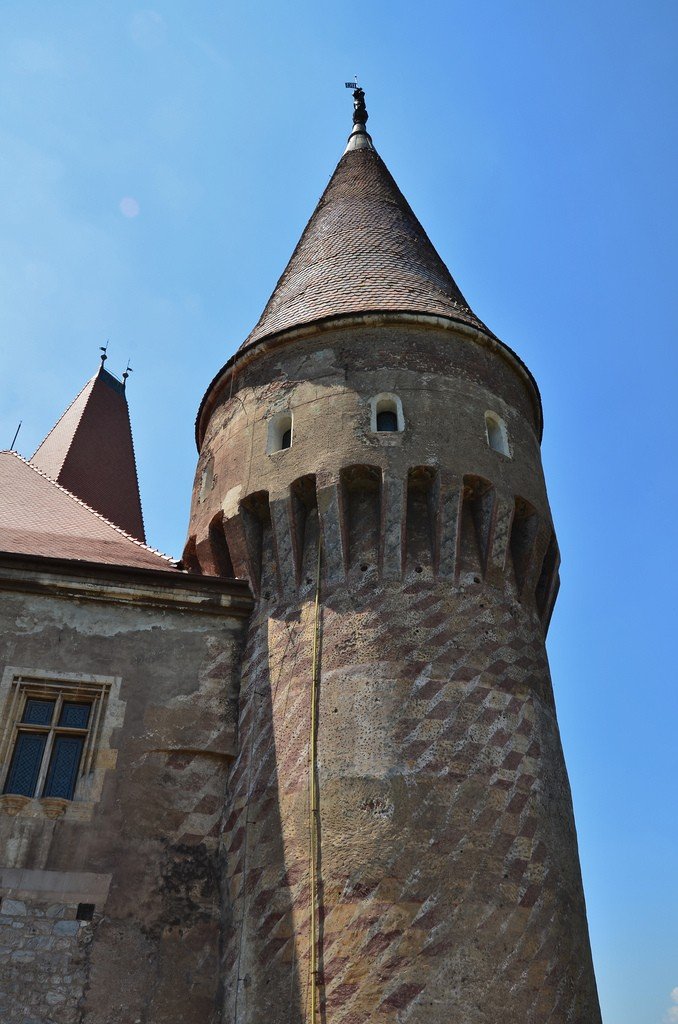
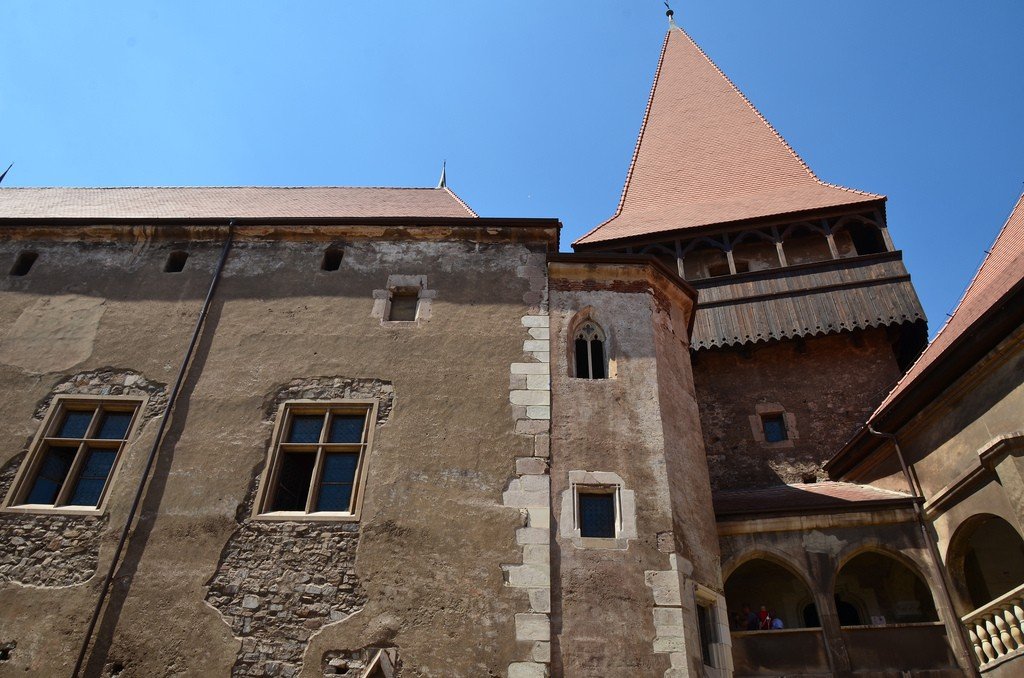
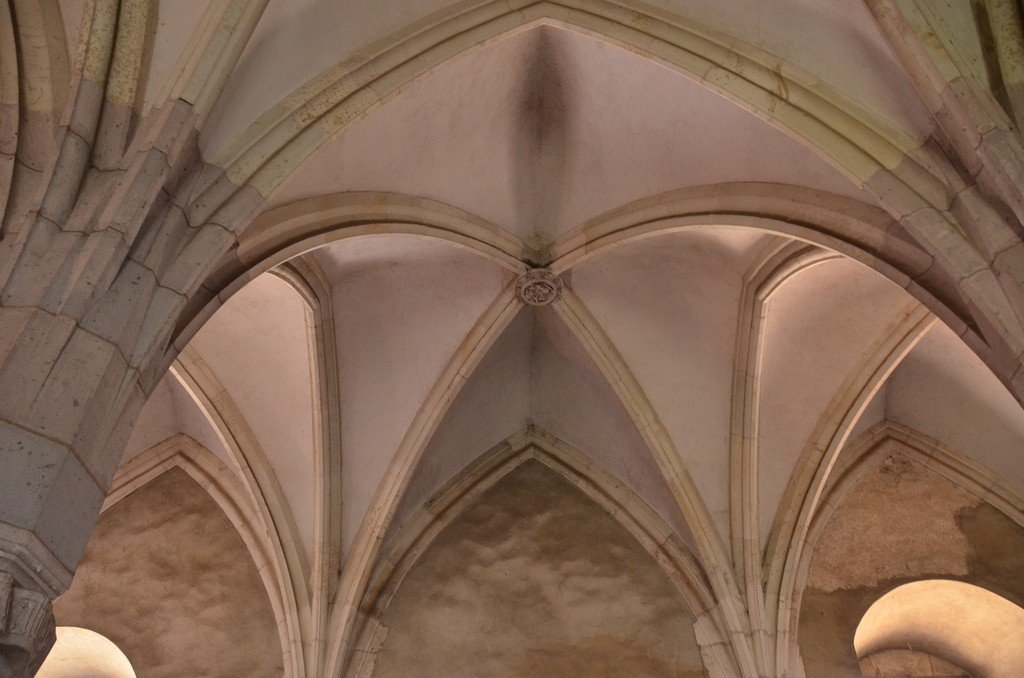
Video: Corvinov Castle
Contents- History of the Romanian castle
- Walking around Corvinov Castle
- Activities
- Schedule and prices
- How to get there
History of the Romanian Castle
The first written mention of the castle dates back to the 14th century. At first it was an oval-shaped fortress. It had only one defense tower – in the northern wing. The southern wing was fortified only with a stone wall. Then, in 1409, King Sigismund of Hungary gave the fortress to Prince Vajk (Vojk) Hunyadi for his military merits. His son Janos decided to completely transform the fortification. The new owner made his own changes – he added seven towers, built a chapel and created auxiliary rooms in the southern wing. The structure was inherited by Matvej (Matyas) Korvin. He paid a lot of attention to the castle: he added a loggia in the northern wing and took care of the exterior decoration. The originally Gothic building received Renaissance and Baroque elements.
.Corvinov Castle was the property of the Hunyadi family until the 16th century, and then passed to the Austrian king. Thereafter, the building changed more than 20 owners. Each new owner tried to add something to his taste. As a result, the defensive structure combines Gothic and styles of different Renaissance periods. In the XVII century, a snow-white tower and the Betlen Palace were erected. In the 19th century, the Corvinov Castle was damaged by fire, especially the wooden structures. To restore the former appearance of the castle, restoration was carried out for a hundred years. In the middle of the XX century, another stage of restoration work was carried out, the building was converted into a museum and opened to the public.
.
Walking around Corvinov Castle
Today, the Corvinov Castle welcomes tourists. The structure impresses with its elegant appearance: balconies and windows are decorated with carved stone ornaments, round and triangular towers stand side by side, decorative elongated arches attract attention. This is not a snow-white castle from a fairy tale, but a rather gloomy structure. Guests get inside by a huge wooden bridge overhanging a deep moat. The path passes through a gate under the main tower, and tourists are directed to the courtyard.
There is a 30-meter well in the courtyard, and a statue of St. John of Nepomuk can be seen. Nearby is a dungeon. To the left of the courtyard are the loggia of Matyasz and the Golden Room. Inside the loggia you can see frescoes telling about the history of the Corvinus family.
.
The total area of the complex is vast – 7 thousand square meters. The palace occupies the western part of the fortress. There are 42 rooms in the building, but only a few are available for viewing. Among them are the Knights’ Hall and the Assembly Room. Both rooms are rectangular in shape, separated by columns and arches. The rooms contain the skins of exotic beasts and antique weapons. The knight’s room was used for banquets, while the Council Room was for ceremonial events. A spiral staircase leads to the Diet Hall in late Gothic style.
.Tourists will also be interested in the Hunyandi Gallery, located to the west of the Council Hall. It connects the palace together with the tower called “Fear Not”. The suspended gallery is over 30 meters long – it rests on limestone pillars.
.They also show travelers the torture chamber, which looks very believable. Instruments for torture, moulages of martyrs – it seems as if you really get into the past. For the curious, there are instructions with information. It is believed that Vlad Tepes III spent 7 years in the dungeon of the castle.
.
You can also visit the two towers (Capistrano and “Do not be afraid”), which offer a magnificent view of the surroundings of the Corvinus Castle. In the eastern part, the chapel of the fortress is worth seeing. The architecture combines two styles – Romanesque and Late Gothic. Researchers believe that the furnishings of the chapel copy the interior of the French Amiens Cathedral. Unfortunately, only some elements of medieval painting have survived.
.While exploring the ancient castle, tourists pay attention to the images of a raven. This is the coat of arms of the Corvin family: the wise bird holds a ring in its beak. The nickname Corvins comes from the Latin word for “raven.”
.Events
In the summertime, the Corvins Castle hosts various events: a craftsmen’s fair, opera nights, a concert program, exhibitions, medieval tournaments. If the enchanting medieval atmosphere is to your liking, you can organize your own celebration. Some rooms are available for rent to celebrate birthdays, weddings or weddings.
.Schedule and prices
Corvinus Castle can be visited every day except Monday. It opens at 9am and is open until 8:30pm. The last entrance is 45 minutes before closing time. The fee for visiting differs depending on the month: in winter you can get inside for 20 RON (about 5 dollars), in summer – for 30 RON. Additionally, you have to pay for photography and videography. There are discounts for schoolchildren, students and pensioners.
.How to get there
To get to Corvinov Castle, you need to travel to Budapest (Simeria station) and then take a bus to Hunedoara. Parking is available for car travelers.
